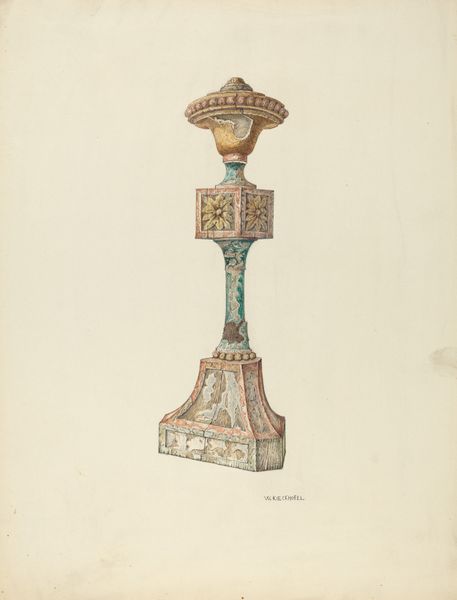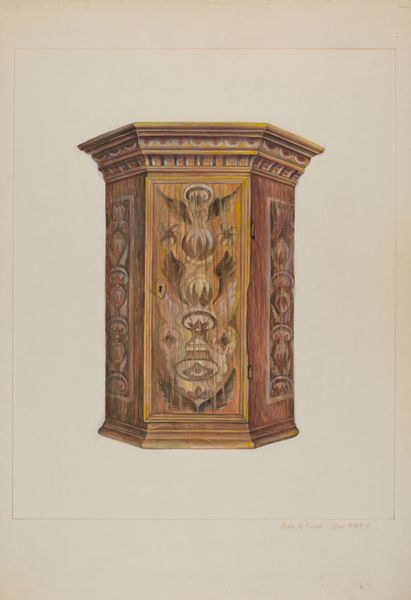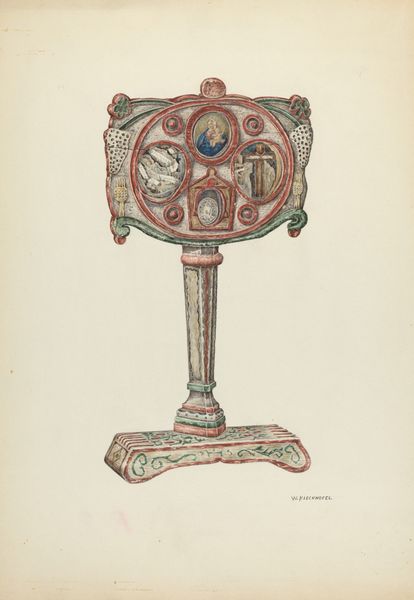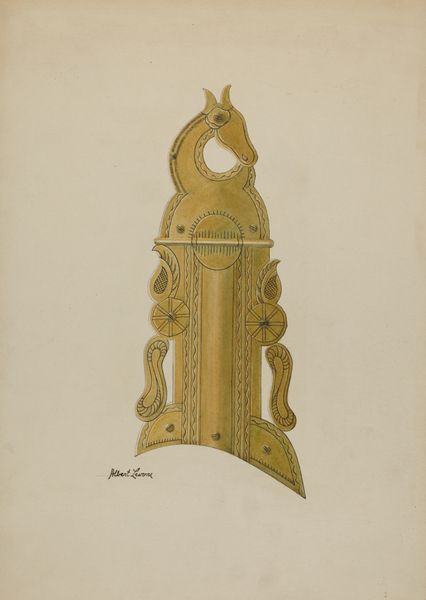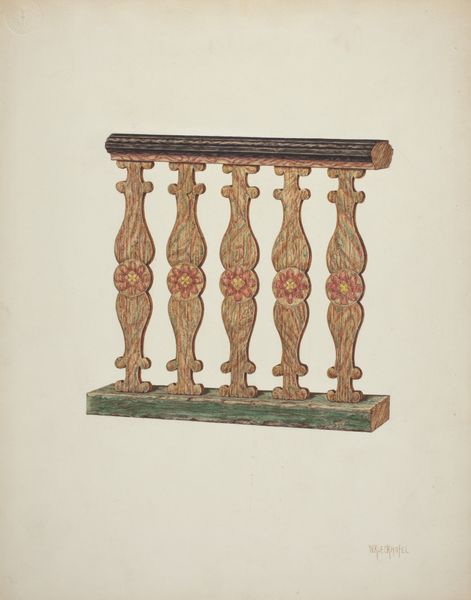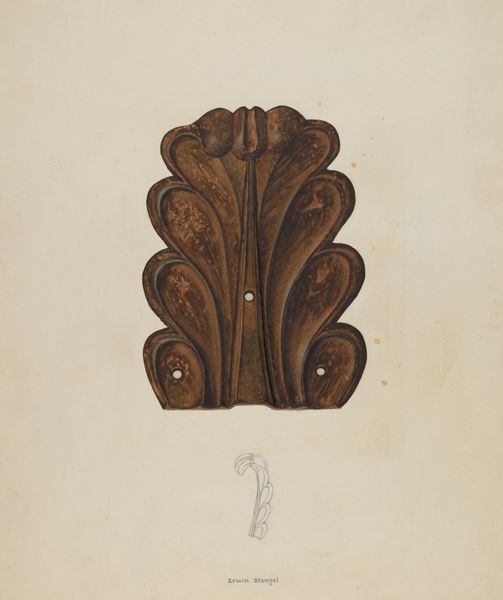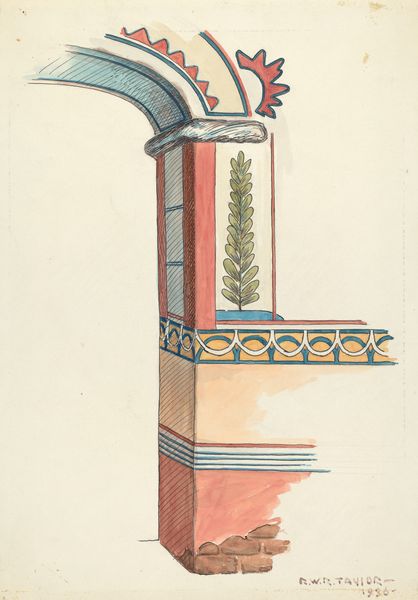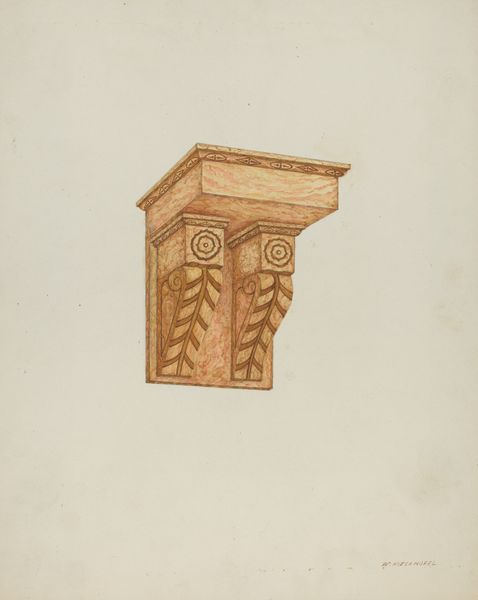
drawing, mixed-media, painting, watercolor
#
drawing
#
mixed-media
#
water colours
#
painting
#
watercolor
#
folk-art
#
watercolour illustration
#
regionalism
#
watercolor
Dimensions: overall: 35.5 x 26.7 cm (14 x 10 1/2 in.) Original IAD Object: 2'high; 12 1/2"wide, top. 10 1/4"wide, bottom. 8 3/4"deep
Copyright: National Gallery of Art: CC0 1.0
Editor: This is Hal Blakeley's "Painted Wall-stand for Flowers, etc." from 1939. It looks like a mixed media drawing, or maybe a watercolor painting. It’s quite charming and feels very rooted in a specific place and time. What strikes you when you look at it? Curator: I see a fascinating intersection of folk art traditions and regionalism, common in the US during the 1930s. It makes me think about the romanticization of rural life during a period of great social and economic upheaval. Who was this artist making this image for, and why? Do you think the artist was actually representing a real, existing object, or was creating an idealized version of folk culture? Editor: That's a great point. It does feel a bit idealized, maybe even nostalgic. What aspects of the piece lead you to interpret it through that lens? Curator: The meticulous rendering of the painted decorations, almost too perfect, too clean. It lacks the wear and tear of actual use. Think about the broader social context: the Dust Bowl, the Depression. The choice to depict this quaint, decorative object speaks to a desire for simpler times, a longing for cultural identity rooted in a romanticized past, and, by extension, a need to address how folk art may often obscure the harshness of life for many rural communities at that time. Who did this imagery exclude or perhaps unintentionally erase? Editor: That’s really fascinating. I hadn’t considered it in terms of the socio-economic context of the time. Now I see how it might be less a straightforward celebration of folk art and more a complex commentary on a nation in transition. Curator: Exactly! By interrogating these images and their role in shaping cultural narratives, we can better understand the complexities of the past and how they continue to influence our present. This is folk art representing a region in crisis and transition; it needs our continued and empathetic attention. Editor: I'll definitely look at art from this period differently from now on. Thanks for the insightful perspective!
Comments
No comments
Be the first to comment and join the conversation on the ultimate creative platform.
